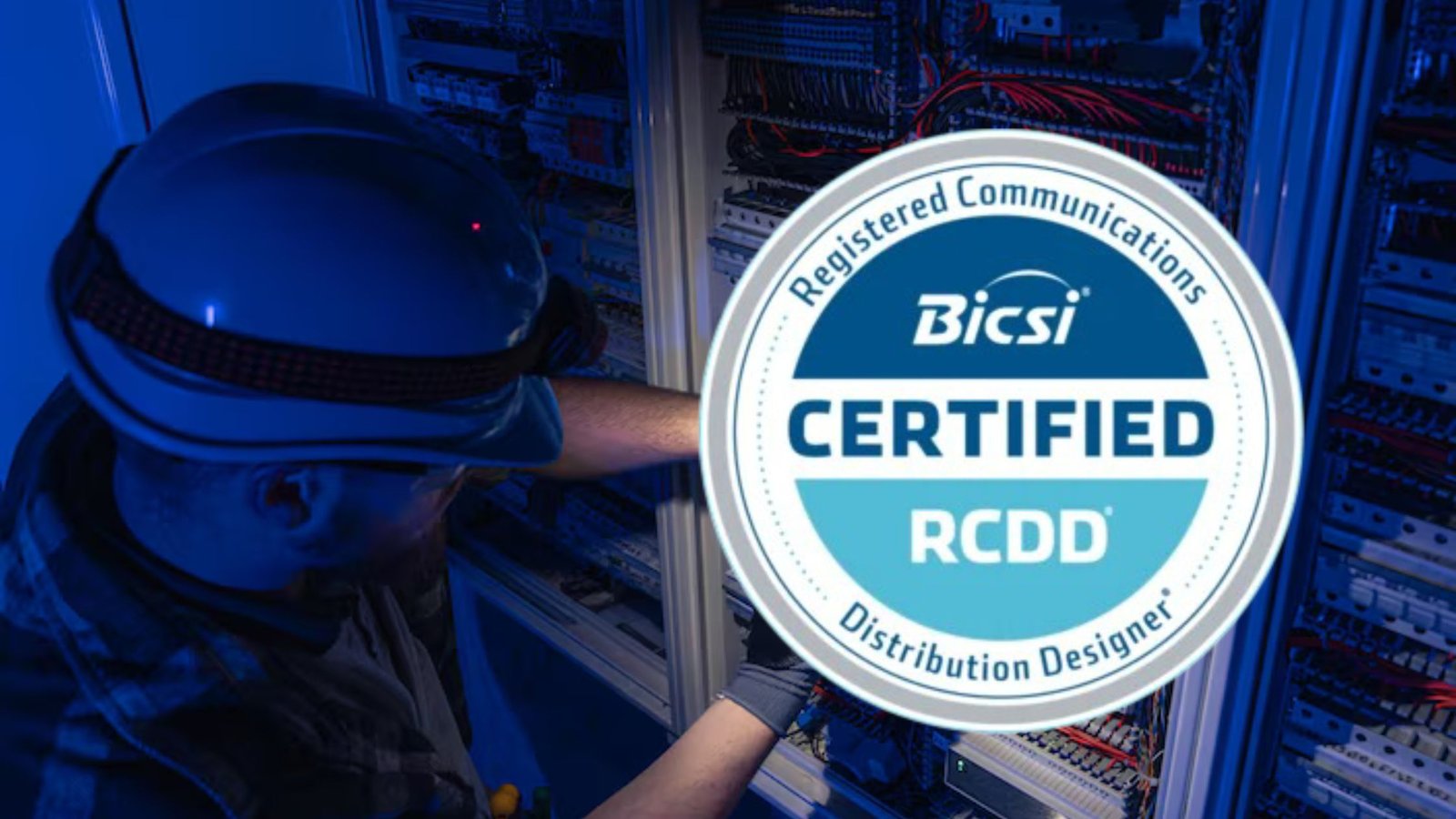In the ever-evolving field of Information and Communications Technology (ICT), staying ahead requires not only skill but also recognized credentials. One such credential that continues to gain prestige is the RCDD Certification — Registered Communications Distribution Designer. Whether you’re a designer, project manager, or consultant in the ICT space, this certification validates your expertise in designing and integrating communication infrastructure.
But what exactly is the RCDD Certification? Why is it important, and how can it benefit your career? In this blog, we will explore these questions and provide tips on how to successfully earn this esteemed designation.
What Is RCDD Certification?
The RCDD Certification is administered by BICSI (Building Industry Consulting Service International), a globally recognized association supporting the ICT industry. An RCDD is an expert in designing structured cabling systems for buildings and campuses. This includes everything from data networks and voice systems to video and building management systems.
To qualify for the RCDD exam, candidates must have a strong background in ICT. This typically means at least five years of ICT design experience or two years of design experience combined with a degree in ICT or a related field.
Why Pursue the RCDD Certification?
1. Professional Recognition
The RCDD designation is globally respected and demonstrates that you possess in-depth knowledge of structured cabling systems and telecommunications infrastructure. Employers and clients recognize the value of an RCDD, often favoring certified professionals for high-stakes projects.
2. Career Advancement
Earning the RCDD Certification can open doors to new opportunities. It often leads to higher-level roles such as lead designer, project manager, or consultant. Many government and enterprise-level contracts specifically require an RCDD-certified professional on the team.
3. Higher Earning Potential
According to industry surveys, professionals with an RCDD Certification can command significantly higher salaries compared to their non-certified peers. It serves as a mark of credibility and technical expertise, both of which are valuable assets in today’s competitive job market.
4. Global Opportunities
Because BICSI and the RCDD Certification are internationally recognized, holders of this credential can work across different countries. It opens up international consulting and design opportunities, making it ideal for those looking to work on global infrastructure projects.
What Does the RCDD Exam Cover?
The RCDD exam is comprehensive and challenging. It focuses on a wide range of topics, including:
-
Telecommunications Spaces
-
Backbone and Horizontal Distribution Systems
-
Network Design
-
Pathways and Spaces
-
Bonding and Grounding
-
Firestopping and Codes
-
Data Centers
-
Building Automation Systems
The exam consists of 100 multiple-choice questions and is administered in a two-and-a-half-hour session. Candidates must be thoroughly familiar with the BICSI Telecommunications Distribution Methods Manual (TDMM) — often referred to as the “bible” for RCDD preparation.
Study Tips for Passing the RCDD Exam
-
Get the TDMM: Start by getting the latest edition of the BICSI TDMM. This book contains nearly everything you’ll need to know for the exam.
-
Create a Study Schedule: Don’t try to cram all the information in one go. Break your study plan into manageable weekly goals over 2–3 months.
-
Take a Prep Course: BICSI and other training centers offer RCDD prep courses. These can be especially helpful if you need structured guidance.
-
Join Study Groups: Collaborating with peers can help you understand complex topics and give you moral support as you prepare.
-
Practice Exams: Take multiple practice exams to familiarize yourself with the test format and identify areas where you need improvement.
Real-World Applications of RCDD Certification
With an RCDD Certification, you can work in various environments including:
-
Corporate Campuses: Designing network and communication systems for enterprise offices.
-
Healthcare Facilities: Implementing data and voice infrastructure for hospitals and clinics.
-
Data Centers: Overseeing the design and layout of critical data systems.
-
Educational Institutions: Ensuring efficient, scalable ICT infrastructure for schools and universities.
-
Government Projects: Participating in secure, large-scale communications designs for municipal, state, or federal projects.
In all these roles, your RCDD credential ensures that you’re trusted to deliver robust, standards-compliant solutions.
Common Challenges and How to Overcome Them
Time Commitment
Balancing work, life, and study is one of the biggest challenges. Create a strict yet flexible study plan and stick to it.
Technical Complexity
Some topics, such as grounding or cable tray design, are particularly complex. Supplement your study with real-world site visits or online video tutorials to better visualize these concepts.
Test Anxiety
Practice exams and simulations can help reduce nervousness. Familiarity with the test format can greatly improve your confidence and performance on exam day.
Conclusion
The RCDD Certification is more than just a title—it’s a powerful career asset in the ICT field. It validates your expertise in designing and implementing structured cabling systems, boosts your credibility with employers and clients, and opens up new career pathways both domestically and globally.
If you’re committed to advancing in the ICT industry, especially in roles related to structured cabling, network design, or infrastructure planning, then pursuing the RCDD Certification should be your next step. It’s an investment in your future that pays dividends in respect, opportunity, and earnings.

Leave a Reply